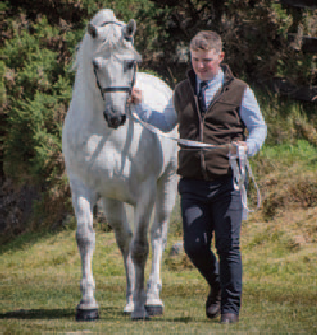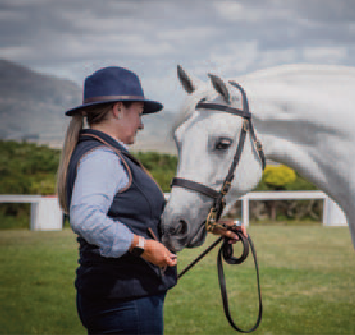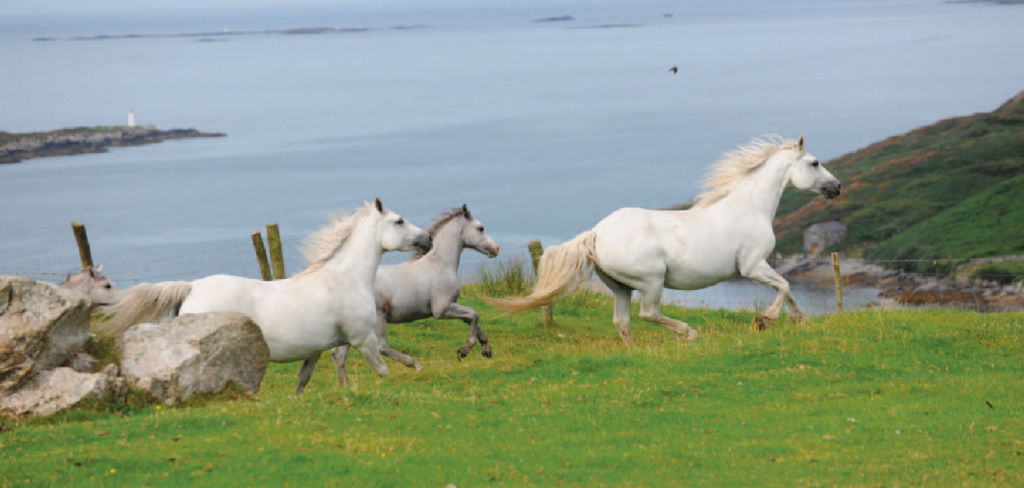

The Connemara pony, an Irish native breed, originated in the part of County Galway known as Connemara, west of Lough Corrib and bordering the Atlantic Ocean in the Republic of Ireland. The Connemara pony is considered an endangered breed under EU law.
The Connemara pony is a sturdy, self- reliant, agile, careful, compact, well-balanced, versatile pony with good conformation with a willingness to work. It is nimble and sure- footed. It is known for its natural jumping ability and for its excellent bone and hard hooves.
Originally a utility pony to work the land, carry turf and transport the family, its size made the Connemara easy to harness and the pony’s natural strength enabled it to pull a carriage with several adults.
The less able were weeded out until with each succeeding generation the Connemara pony stabilised as a willing, even-tempered animal able to respond to a wide range of work requirements under a variety of conditions.
This pony breed has proven beyond doubt its willingness to work with human partners, today excelling in many sporting activities, being an eager confident jumper, known for its relatively big stride and even bigger heart. Such is its versatility the
Connemara pony is suitable for youngsters and adults in all areas of modern
horsemanship.
The interests of the Connemara pony breed are protected by the Connemara Pony Breeders’ Society (CPBS) which is recognised by the Department of
Agriculture, Food and the Marine under EU Animal Breeding Regulations.



In 2018, 4,330 breeding mares and 415 stallions were recorded in the Republic of Ireland, and 58 breeding mares and 15 stallions in Northern Ireland.
Characteristics of the Connemara Pony and the Breed Standard
The Connemara pony’s unique set of nine characteristics establishing a breed standard are:


The Connemara Pony Breeders’ Society maintains the herd book recording the origins and subsequent lineages of the Connemara pony. The Studbook of Origin was closed in 1964 and since then no further outside blood has been introduced. Only ponies registered in the Studbook are permitted to take part in the breeding programme.
The registered offices of the Connemara Pony Breeders’ Society are at The Showgrounds, Clifden, Co. Galway H71 YA09
In 1923 the Connemara Pony Breeders’ Society and Studbook was founded with the declared intention for the preservation and improvement of the Connemara pony. The first studbook was published in 1926, with details of 93 breeding mares and 9 stallions. The list of stallions included three ponies who became founders of two of the five main lines which survive today.
For ease of reference these five recognised lines are each distinguished by a colour. Amongst the first ponies recorded in the Studbook are Cannon Ball (1) and his son Rebel (7) founders of the Blue Line, and Connemara Boy (9) founder of the Red Line.
The Green Line was founded when Mountain Lad was registered in 1938. These three male lines are the only ones which can be traced to the foundation sires from today’s ponies.
To increase the gene pool, the CPBS introduced outside blood, and during the 1940’s used three Irish
Draught stallions, May Boy being the most effective. Three thoroughbred stallions were also used. Of these Little Heaven was the most influential of the introduced sires and his half-bred son, Carna Dun founded the Purple Line.
In 1954 the CPBS bought a dun colt by the Arab stallion Naseel, out of a Connemara mare. This half- bred colt was registered in 1958 as Clonkeehan Auratum and was the founder of the Orange Line.
Each pony can be also traced back through its dam and her dam line to a founding mare; however since more mares than stallions breed, the descendants from any mare over several generations tend to be more branched and so instead of ‘line’, ‘mare family’ is the term used. The earliest born Connemara pony to have her dam identified in the Studbook was Grey Lass in 1932.
The breeding programme aims to preserve and improve the breed as per the characteristics and traits of the breed.
